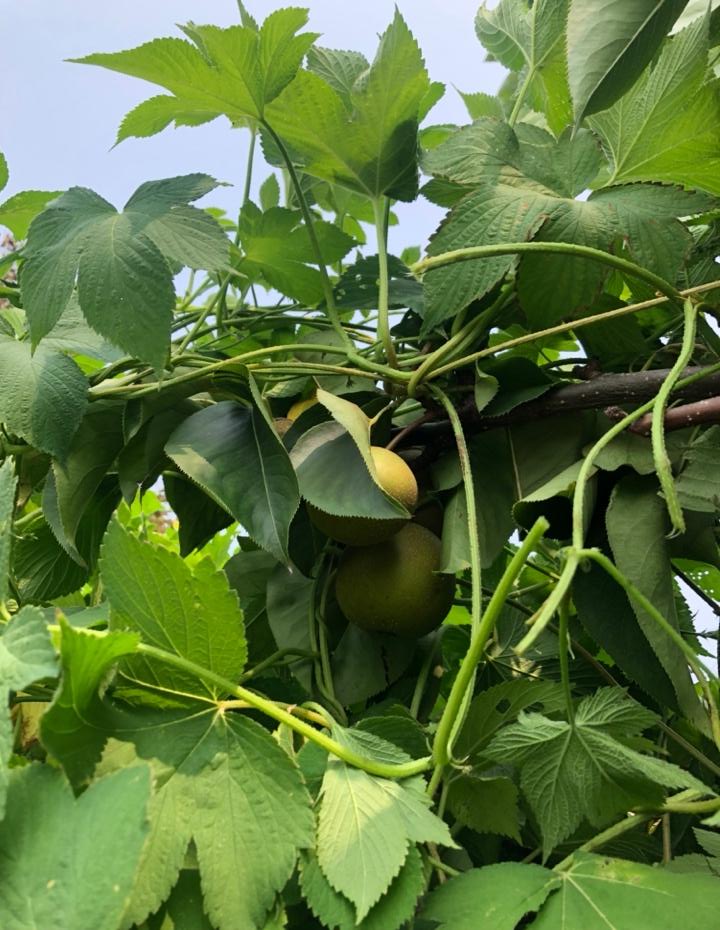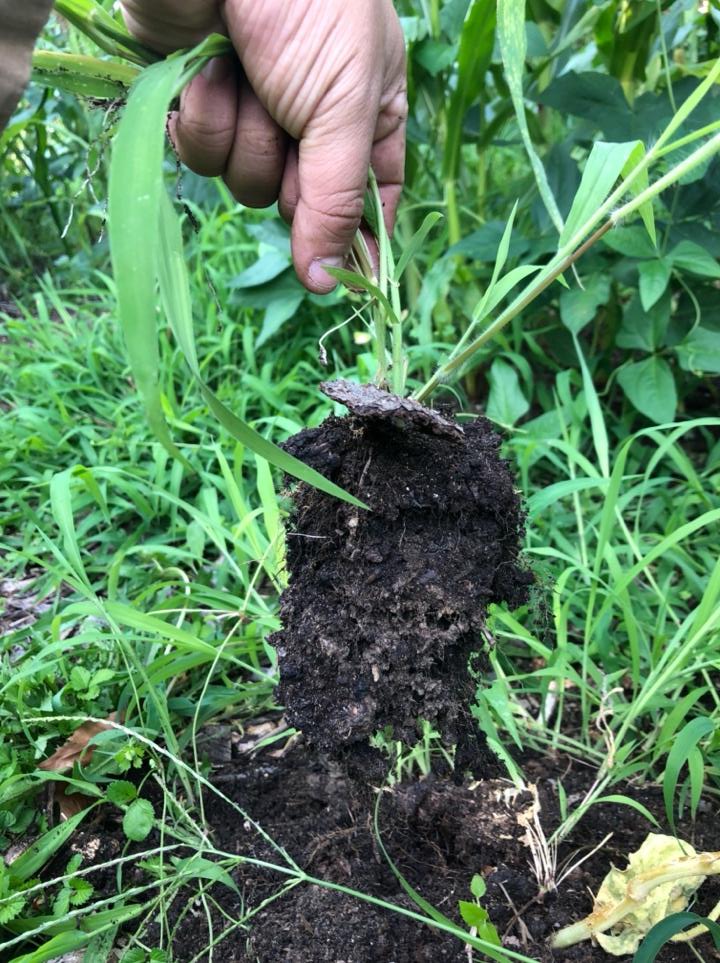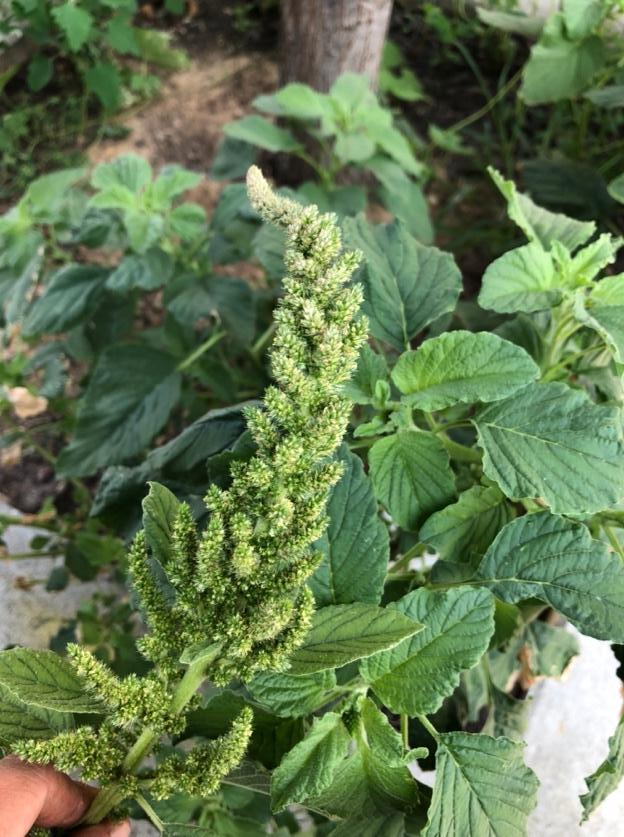
Do I have to pull that? I thought to myself as I admired a lush patch of flowering violets in a row of ripe strawberries. Understanding weeds and their different interactions with cultivated plants can be an overwhelming thing to consider. There are such a wide variety of weeds with different impacts, edible or medicinal uses, and at times benefits to cultivated plants. In this case, it was fine to leave the violets since they provide positive support to the soil and aren’t necessarily getting in the way of our harvest.
So how can we create more understanding about what to pull? In this blog we’ll review suggestions and methods that have been helpful to consider this summer.
What is a weed?
Weeds are known generally as plants growing in the way of or otherwise disturbing the growth of another intentionally placed plant. In orchards and gardens these weeds are often found interrupting a tree or impacting a vegetables growth by climbing or taking up too much of their space. Like in the photo above, weeds can be aggressive and severely disrupt a plant’s growth. The POP Weed Identification Guide, available through The Free Library of Philadelphia, is a great resource for identifying 40 common weeds in Philly orchards and lays out helpful information about weeds we can consider for removal and which we can tolerate. These days there are many phone apps that can help identify plants and weeds (like PlantNet and iNaturalist). Many common weeds are also edible (check out eattheweeds.com or follow accounts like ‘Black Forager’ on social media)!
There are all types of weeds, annual, perennial, biennial to consider.
Chart of weed types from Oregon State University
Given the definition and growing methods of each weed, we can take seasonal approaches to controlling aggressive weeds impacting our plants. During this wet summer of 2023 we may find that we are weeding more than usual. The extra rain and continued thunderstorms seem to have served as a boost for seeds lying in disturbed soil. So let’s talk removal.
Methods and considerations
When weeding, it’s important to consider the soil that you’re pulling from. Weeds can sometimes show us what kind of soil we have. For example, plantain grows in compacted soil with low fertility and often indicates heavy clay. Weeds can also supplement iron and other minerals that support the production of nutrient rich food. It is commonly known that clovers support in fixing nitrogen and protecting soil from erosion.
Soil is full of life and works hard to create a balance to nourish all types of life forms. In cities, we have long histories of impacts to soil from development and industry, so when supporting our gardens it’s important to support healthy soil as much as we can. It’s important to be intentional with the way you approach this process.
Garden tools are allies in this process and can target the root system of the plant and support easier pulling. Some of my favorites include the hori hori, a japanese soil knife, or just working with hands to get a good grip of a shallow root from the base.

Sometimes it is also preferable not to dig out the entire root system of a weed, as soil disturbance can result in more new weed seeds germinating. Depending on the specific type of weed, you may be able to just slice off the stem or crown just below the soil, leaving the rest of the root system in place. Note that this is not effective for weeds with aggressive lateral root systems! Read more in this simple guide to hoeing, which advises on the best techniques and tools for managing weeds via garden hoes.
Another method that can be helpful is tapping soil back into the ground after weeding. I began to do this more consciously after attending PASA conference, where we learned about how turning soil can actually cause the spread of more weeds and generally, we want to avoid till-like aggravation to the soil. Bryan O’Hara explained that he has less weeds since understanding more closely about the life in his soil.
Because of this we must be cautious with the vigor in which we interact with the soil and the plants we remove. Consider what approaches to the soil could be gentler and help to maintain the soil undisturbed. At POP we also practice Weeding In Place, a method of leaving weeds to provide organic matter to the soil. This is sometimes better than throwing weeds away in the trash and can give a nice barrier to exposed soil you’ve just pulled from.
Seed dispersal
Not every weed control needs to be removing the whole plant. In this time of year especially we are beginning to see many weeds start to develop their seed pods. Plants like burdock have such an extensive root system, you might wear yourself out just trying to dig up a root. An effective method can be to stop the dispersal of its seeds before they disperse. Did you know that weeds produce an extremely high number of seeds? Here are some examples:
- giant foxtail–10,000 seeds
- common ragweed–15,000 seeds
- purslane–52,000 seeds
- lambsquarters–72,000 seeds
- pigweed–117,000 seeds
We want to aim to remove seed heads when we see them coming. If you can’t remove the whole root, cutting the plant as low to the ground as possible is a good option for removing the seed head.

As you weed this summer take into consideration ways that you can get creative and witness the life within your weed and cultivated plant interactions.
Have a weeding method you like and want share? Send us an email at info@phillyorchards.org
This edition of the POP TIPS was prepared by Carolina Torres with the support of Phil Forsyth.
Sources
Penn State Master Gardener Manual
An Ecological Understanding of Weeds
What weeds tell you about your soil
DISCLAIMER
The Philadelphia Orchard Project stresses that you should not consume parts of any wild edible plants, herbs, weeds, trees, or bushes until you have verified with your health professional that they are safe for you. As with any new foods that you wish to try, it is best to introduce them slowly into your diet in small amounts.
The information presented on this website is for informational, reference, and educational purposes only and should not be interpreted as a substitute for diagnosis and treatment by a health care professional. Always consult a health care professional or medical doctor when suffering from any health ailment, disease, illness, or injury, or before attempting any traditional or folk remedies. Keep all plants away from children. As with any natural product, they can be toxic if misused.
To the best of our knowledge, the information contained herein is accurate and we have endeavored to provide sources for any borrowed material. Any testimonials on this web site are based on individual results and do not constitute a warranty of safety or guarantee that you will achieve the same results.
Neither the Philadelphia Orchard Project nor its employees, volunteers, or website contributors may be held liable or responsible for any allergy, illness, or injurious effect that any person or animal may suffer as a result of reliance on the information contained on this website nor as a result of the ingestion or use of any of the plants mentioned herein.